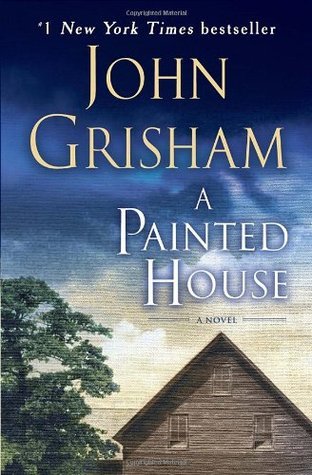TL;DR
A Painted House by John Grisham explores a young boy's coming-of-age in 1950s rural Arkansas amidst cotton-picking season and family secrets.
What is A Painted House about
A Painted House is a semi-autobiographical novel by John Grisham, set in rural Arkansas during the 1950s. The story is narrated by seven-year-old Luke Chandler, who lives on his family's cotton farm. The novel chronicles a single autumn season, focusing on the challenges and secrets that arise as the Chandlers hire migrant workers to help with the harvest. Through Luke's eyes, readers witness the harsh realities of farm life, the complexities of social dynamics, and the impact of secrets that threaten to alter the course of the family's future.
A Painted House 6 Key Takeaways
Arrival of Workers
The story begins with the arrival of migrant workers, both from the Ozarks and Mexico, to help harvest the Chandlers' cotton crop. These workers play crucial roles in the unfolding drama.
Luke's Perspective
Seven-year-old Luke Chandler narrates the events, offering a unique, innocent yet insightful perspective on the complexities of adult life and the harsh realities of farm labor.
The Murder
A pivotal moment occurs when Luke witnesses one of the workers committing a murder. This event introduces intense moral dilemmas and dangers, as Luke grapples with whether to reveal what he knows.
Family Secrets
Luke uncovers various family secrets that not only threaten their livelihood but also test familial bonds and loyalties as the harvest season progresses.
Climactic Confrontations
Tensions rise as the truth about the murder and other secrets begin to surface. Luke's family must navigate these challenges while trying to ensure a successful cotton harvest.
Resolution and Change
The novel concludes with Luke and his parents deciding to leave their home and become migrant workers themselves, symbolizing a significant transformation and the quest for a better future.
Top A Painted House Quotes
- 'The hill people and the Mexicans arrived on the same day. It was a Wednesday, early in September 1952.'
- 'For six weeks they picked cotton, battling the heat, the rain, the fatigue, and sometimes each other.'
Who should read A Painted House?
A Painted House is ideal for readers interested in coming-of-age stories, historical fiction, and tales of rural life. It will also appeal to John Grisham fans eager to explore his work outside the legal thriller genre. Readers will find both heartfelt moments and gripping drama in this vivid portrayal of 1950s America.
A Painted House Best Reviews
- The Washington Post describes the book as 'Captivating and masterfully structured, with the charming, unhurried pace of a story told on the front porch by an old friend.'
- USA Today praises Grisham for 'Stepping outside his usual genre to deliver a heartfelt and vividly descriptive tale, capturing the essence of a bygone era in rural America.'
People also liked these summaries
A Painted House FAQs
Is A Painted House based on a true story?
The story is a semi-autobiographical tale inspired by John Grisham's own childhood growing up in the 1950s Arkansas Delta, reflecting the lives of poor migrant workers and farm laborers.
What happens at the end of A Painted House?
At the end of the novel, Luke and his parents decide to become migrant workers themselves, moving to a new part of the country in search of employment opportunities.
Why did John Grisham write A Painted House?
Inspired by his childhood in Arkansas, John Grisham wrote A Painted House as his first major work outside the legal thriller genre, exploring themes of family, innocence, and economic hardship.
